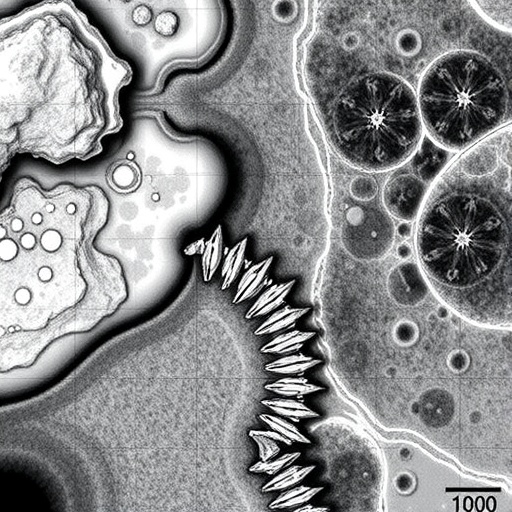In an illuminating new study published in the International Journal of Mental Health and Addiction, researchers have delved deeply into the complex substance use patterns plaguing millions across the United States. This investigation specifically focuses on polysubstance use—the concurrent or sequential consumption of multiple psychoactive substances—and its profound impact on mental health disorders such as major depression, serious psychological distress, and broader classifications of mental illness among U.S. adults. The study offers a comprehensive epidemiological assessment, underscoring an urgent public health concern that demands nuanced understanding and strategic interventions.
Polysubstance use has long been a challenging phenomenon for clinicians and public health professionals due to its multifactorial nature and its exacerbation of mental health vulnerabilities. Unlike single-substance abuse, polysubstance use potentiates psychological harm by compounding neurochemical disruptions within the brain’s reward and stress-regulation systems, thereby heightening susceptibility to mood disorders and psychiatric comorbidities. This research leveraged nationally representative data to quantify how co-use patterns correlate with mental health outcomes, providing fresh metrics instrumental for policy makers and treatment specialists.
At the core of the study is the interrogation of major depression, a debilitating condition characterized by persistent low mood, anhedonia, and cognitive impairments. The data reveal stark differences in depression prevalence depending on the nature and extent of substance use. Individuals engaging in polysubstance use exhibit significantly higher rates of major depressive episodes compared to single-substance users or non-users. This suggests an additive or even synergistic psychological burden stemming from the simultaneous interference of multiple substances on neurotransmitter systems such as serotonin and dopamine—the principal modulators in mood regulation.
.adsslot_ZoYuwV4859{width:728px !important;height:90px !important;}
@media(max-width:1199px){ .adsslot_ZoYuwV4859{width:468px !important;height:60px !important;}
}
@media(max-width:767px){ .adsslot_ZoYuwV4859{width:320px !important;height:50px !important;}
}
ADVERTISEMENT
Equally critical is the study’s examination of serious psychological distress (SPD), a construct that captures intense anxiety, mood instability, and the functional impairments arising therefrom. Polysubstance users reported elevated SPD scores, further implicating the compounded mental health toll wielded by multisystem intoxication. The data affirm the bidirectional relationship between substance use and psychological distress: while distress may precipitate substance consumption as a coping mechanism, the neurotoxic effects of multiple drugs exacerbate emotional volatility and cognitive strain.
Beyond specific diagnostic categories, the study extends its scope to encompass the broader umbrella of mental illness, which includes a spectrum of disorders such as bipolar disorder, anxiety disorders, and psychoses. The prevalence of these conditions was disproportionately high among polysubstance users, highlighting the pervasive impact of multifaceted drug use on cerebral functioning. Neuropathological models suggest that polysubstance use disrupts neural circuitry involved in executive function, emotional regulation, and reward processing, thereby increasing the risk for diverse psychopathologies.
Methodologically, the investigation employed robust statistical techniques on a large cohort drawn from nationally representative surveys, enhancing the generalizability of its findings. Multivariate logistic regression models adjusted for confounders such as socioeconomic status, demographic variables, and existing medical comorbidities, thereby isolating the unique contribution of polysubstance use to mental illness burden. This rigorous approach adds credibility and precision to the observed associations.
The findings carry deep clinical implications. Health care practitioners should prioritize screening for polysubstance use profiles among patients suffering from depressive symptoms and psychological distress, as conventional single-substance treatment paradigms may not adequately address the complexity of these cases. Integrated therapeutic strategies, including cognitive-behavioral therapy combined with pharmacological agents tailored for multi-drug toxicity, may be essential to mitigate these mental health sequelae.
Public health frameworks, too, must reckon with the intricate challenge posed by polysubstance use. Prevention programs need to incorporate education on the specific risks involved when multiple substances are used concurrently, a nuance often overlooked in standard substance abuse campaigns. Furthermore, surveillance systems should be refined to detect evolving patterns of polydrug consumption and their linkage to mental health emergencies, facilitating timely policy interventions.
One particularly alarming insight from the study relates to demographic disparities. Certain age groups, socioeconomic strata, and ethnic populations display higher susceptibility to polysubstance use coupled with mental health deterioration. These disparities underscore that polysubstance use is not merely a behavioral issue but is intricately linked with structural inequalities, necessitating culturally competent and context-sensitive public health responses.
Neurologically, the compounding effects of multiple drugs on brain plasticity and stress-response systems offer fertile ground for mechanistic research. Future studies may unravel how the interplay between substances alters gene expression and epigenetic markers, potentially paving the way for novel biomarkers indicative of polysubstance-related mental health risks. Such advances could unleash precision medicine approaches tailored to at-risk individuals.
The study’s revelation of the multiplied risks associated with polysubstance usage demands urgent policy attention, highlighting the limitations of current drug enforcement and rehabilitation frameworks. Policymakers must incentivize research and resource allocation toward combating polysubstance abuse, acknowledging its higher propensity to induce mental illness compared to isolated substance use. Accelerated development of specialized treatment centers focusing on multiple drug dependencies could revolutionize care standards.
Within the broader societal context, the findings compel a reevaluation of stigma. Polysubstance users often face layered social marginalization which exacerbates their mental health struggles due to reduced access to support systems and health care. Mental health advocacy groups should incorporate narratives that illuminate polysubstance use as a multifaceted medical condition rather than a moral failing, promoting empathy-driven public discourse.
Moreover, the ongoing opioid epidemic, intersecting with the use of stimulants, benzodiazepines, and cannabinoids, creates a complex landscape where polysubstance use thrives. This research provides timely evidence to support integrated harm reduction initiatives, such as needle exchange and supervised consumption sites that not only address overdose prevention but also mental health stabilization—reflecting a holistic paradigm shift.
It is also worth noting that the psychosocial stressors amplified by the COVID-19 pandemic may have catalyzed increases in polysubstance use, complicating the mental health landscape further. Although this study precedes exhaustive data on this phenomenon, its framework offers a critical model for analyzing post-pandemic trajectories of substance use and psychiatric morbidity.
Lastly, this research acts as a clarion call for interdisciplinary collaboration encompassing psychiatry, neurology, epidemiology, and social sciences, to tackle the polysubstance conundrum with the depth of insight it deserves. Only through concerted, evidence-based action can the intertwined epidemics of polysubstance use and mental illness begin to be stemmed, restoring hope for millions facing this dual burden.
Subject of Research:
The impact of polysubstance use on major depression, serious psychological distress, and mental illness among US adults.
Article Title:
Impact of Polysubstance Use on Major Depression, Serious Psychological Distress, and Mental Illness among US Adults.
Article References:
Khan, M.T.F., Mazumder, S., Rana, M.S. et al. Impact of Polysubstance Use on Major Depression, Serious Psychological Distress, and Mental Illness among US Adults. Int J Ment Health Addiction (2025). https://doi.org/10.1007/s11469-025-01520-3
Tags: co-use patterns and mental health outcomesepidemiological study on polysubstance useimplications of concurrent substance usemajor depression and substance abusemental health vulnerabilities in substance abusemental illness and addiction patternsneurochemical disruptions and mood disorderspolicy implications for mental health and addictionpolysubstance use and mental healthpsychological distress and drug usepublic health interventions for addictiontreatment strategies for polysubstance users





